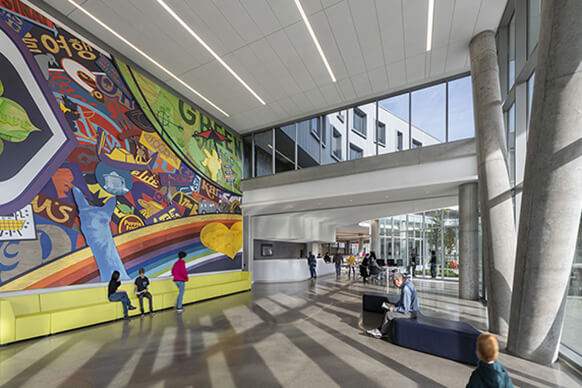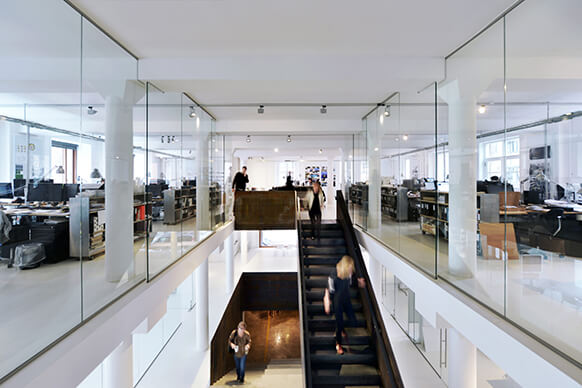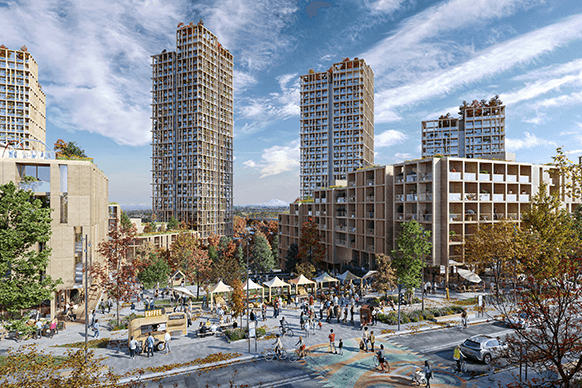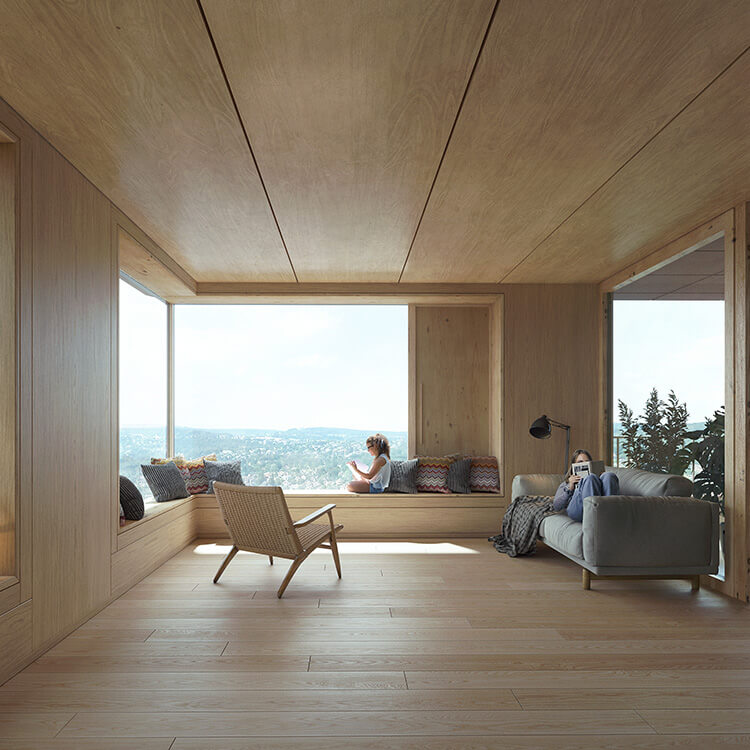
Rocket & Tigerli
The Swiss city of Winterthur is rapidly changing from an industrial hub to a progressive center for higher education and culture. After manufacturing declined in the area, voters gave civic leaders approval to undertake planning efforts that would transform disused industrial buildings and railyards into residential and service zones.
One of these districts, Lokstadt, was once the site of a locomotive factory. Two models manufactured there, Rocket and Tigerli, lend their names to new mixed-use buildings designed by our Denmark studio, Schmidt Hammer Lassen. Instead of following the closed-block structure that was proposed in the city’s original master plan, we proposed weaving the complex into the neighborhood’s social fabric with bright passages and pocket parks. This creates an active community with a distinctive identity.
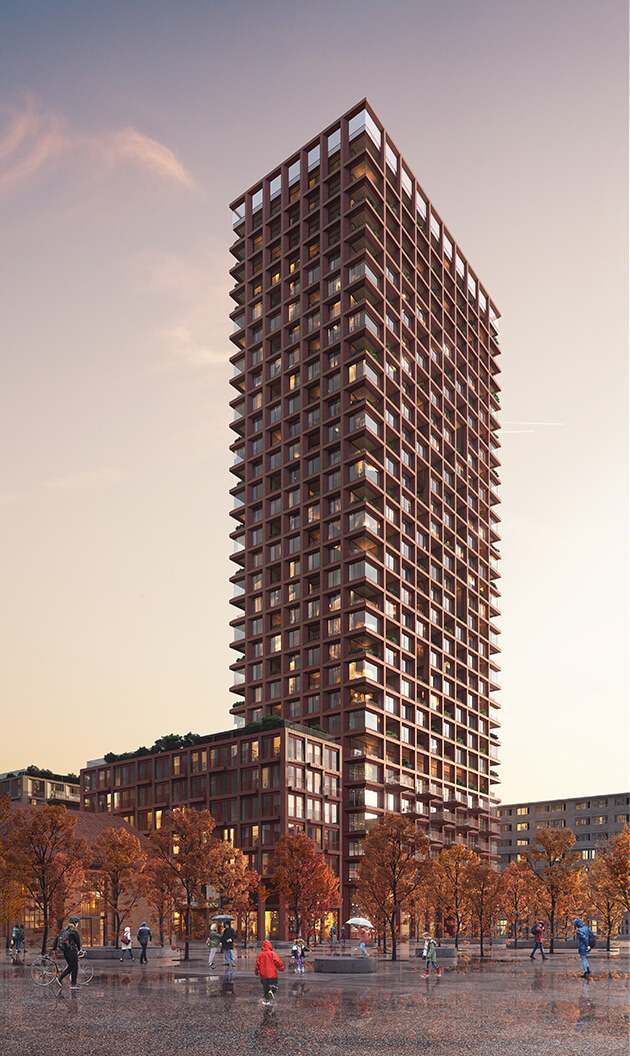
Altogether, the Rocket & Tigerli complex comprises four buildings, each with its own unique expression and containing a variety of functions. The largest of these is Rocket, a 33-story high-rise, composite mass-timber structure that will contain a hotel on the first eight floors and residences above. Clustered around the tower are three mid-rise buildings: Tigerli Nord is slated for affordable housing. The other two, Tigerly Ost and Tigerly West, both provide market-rate rental apartments. The ground floors of all three Tigerly buildings are reserved for retail, providing services to the community and contributing to the activation of the neighborhood.
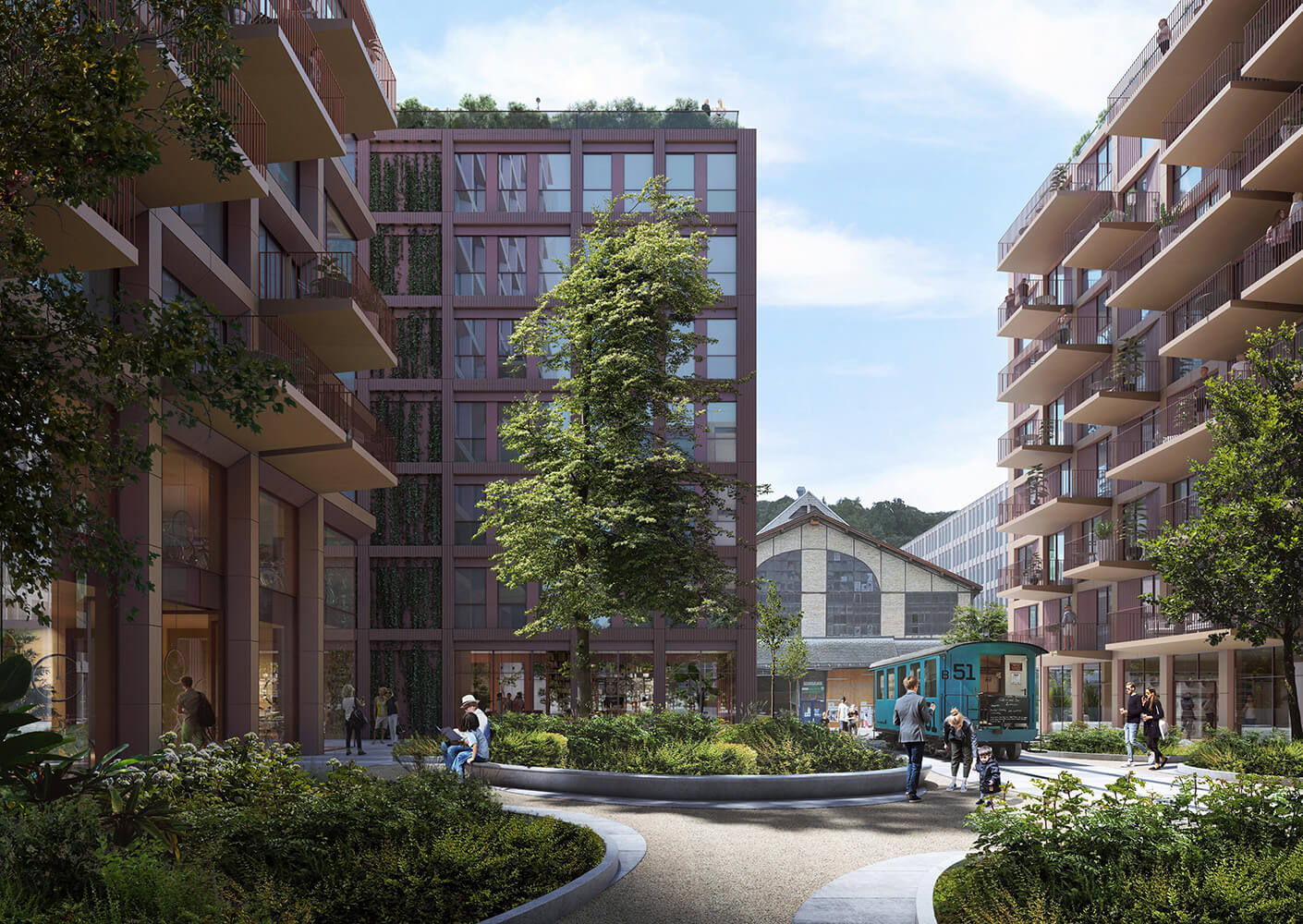
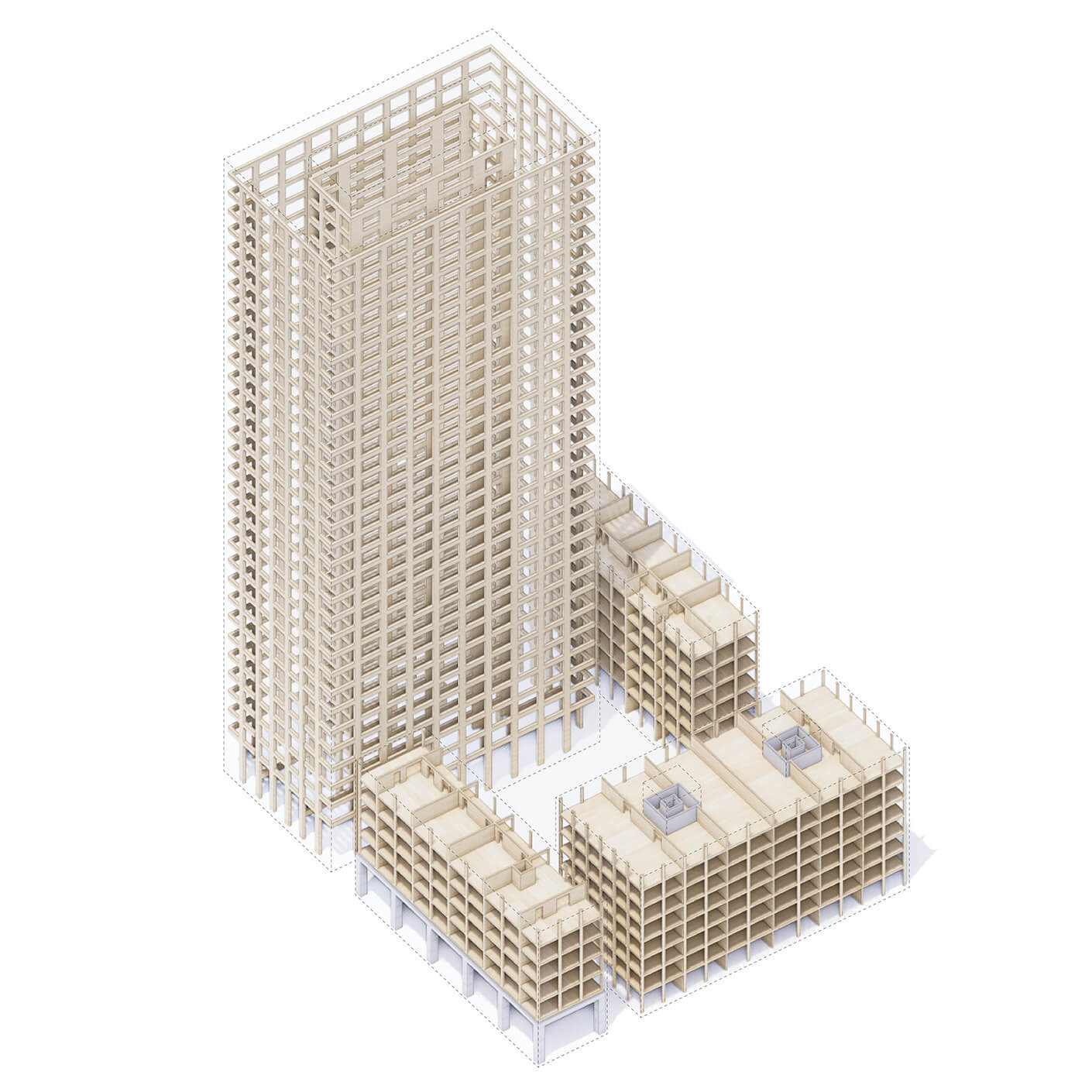
A groundbreaking aspect of Rocket & Tigerli is the innovative use of mass timber. Upon completion in 2027, Rocket will be one of the world’s tallest residential high-rises constructed with a load bearing timber structure, reaching a height of 100 meters. Its pioneering construction system, developed in collaboration with the Swiss company Implenia and the Swiss Federal Institute of Technology of Zürich (ETH) introduces an innovative hybrid slab with wood columns and beams, resulting in a lighter structure and reduced embodied carbon.
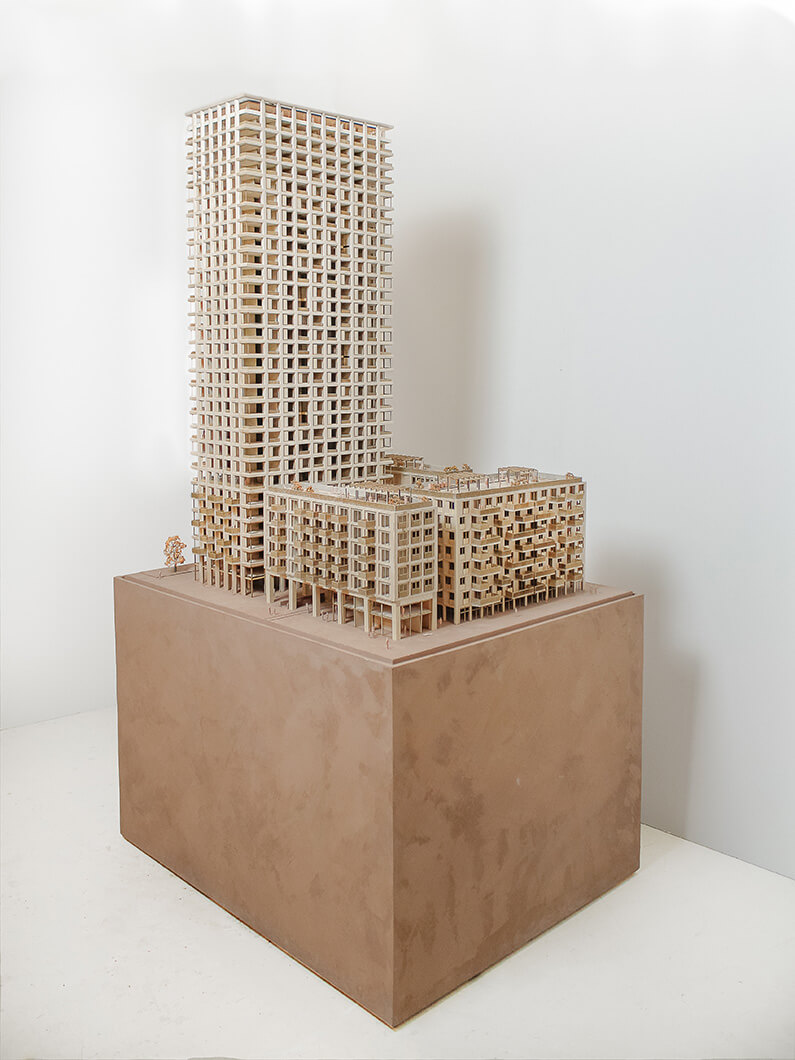
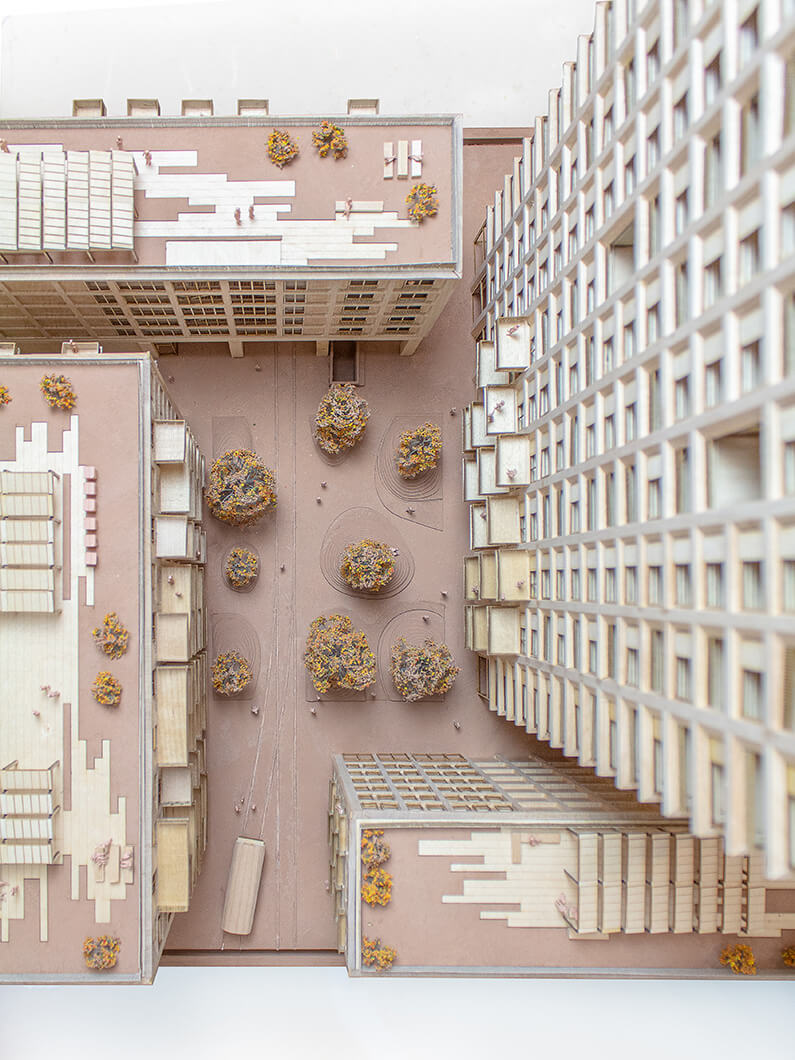
Rocket’s design combines efficiency with aesthetic appeal, creating a high-rise structure that is both functional and visually striking. Alternating floor plates are rotated to add variation and visual interest to the exterior while maintaining modular efficiency. And the residential units in Rocket and Tigerli are compact, but they feel exceptionally spacious due to high ceilings, large windows, and open floorplans.
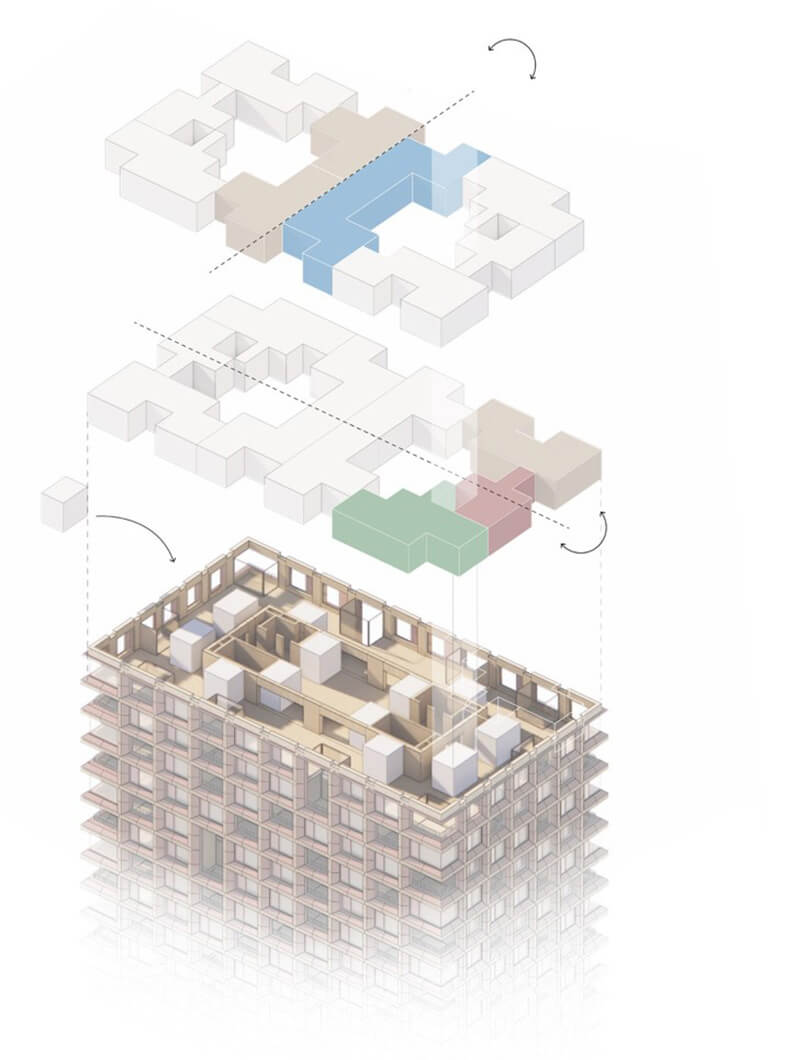
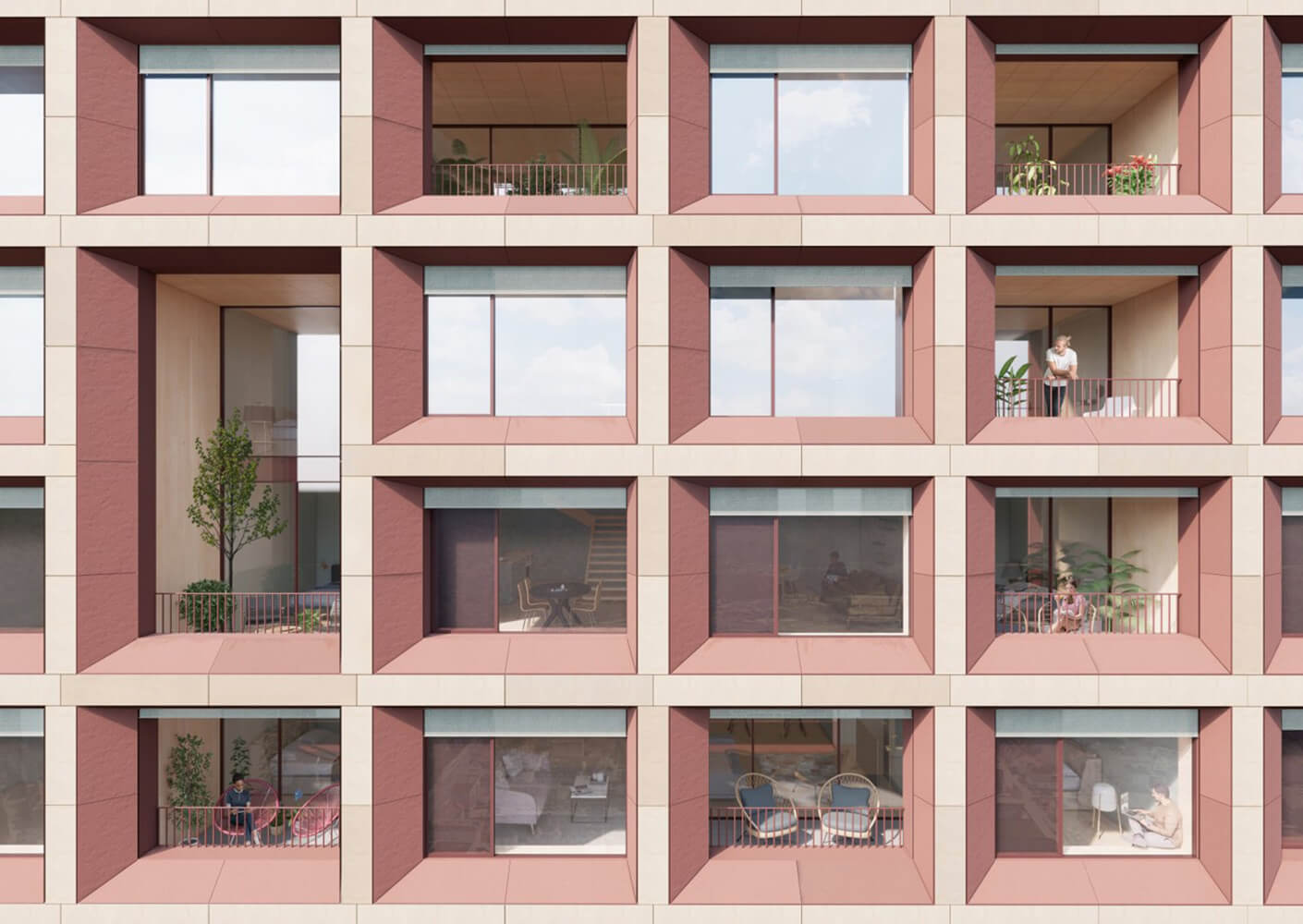
The complex fosters a sense of belonging by encouraging interaction and building connections between residents and visitors, nature, and the arts. By integrating the residential typology of the courtyard block with the fragmented urban fabric of the industrial district, we’re creating a vibrant neighborhood that invites residents and visitors to interact. The publicly accessible courtyard offers space for social activities and creates synergies between the buildings and adjacent public areas. Green roofs and gathering areas at different levels throughout the buildings provide space for activities and opportunities for chance encounters.

